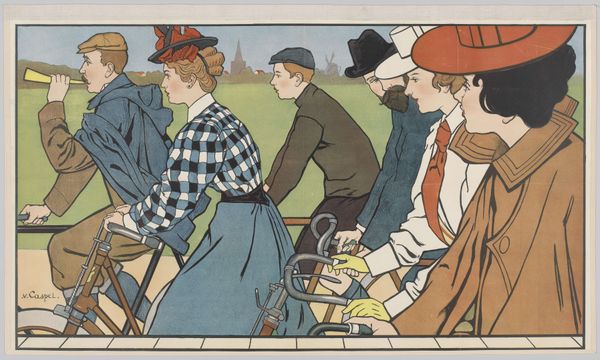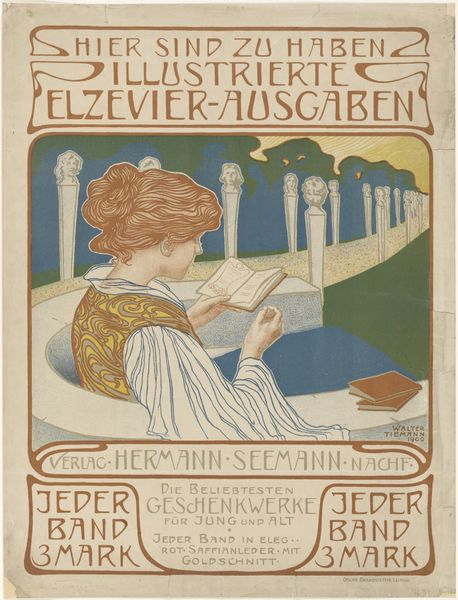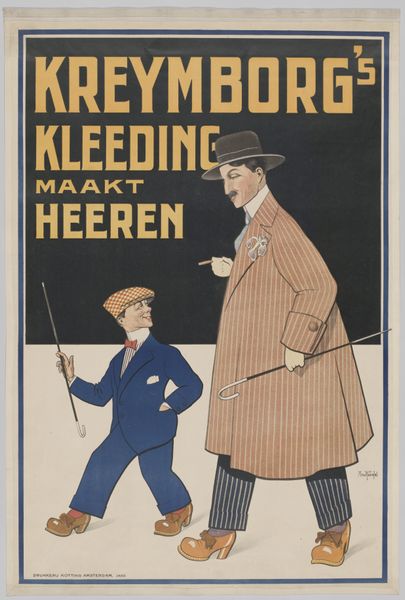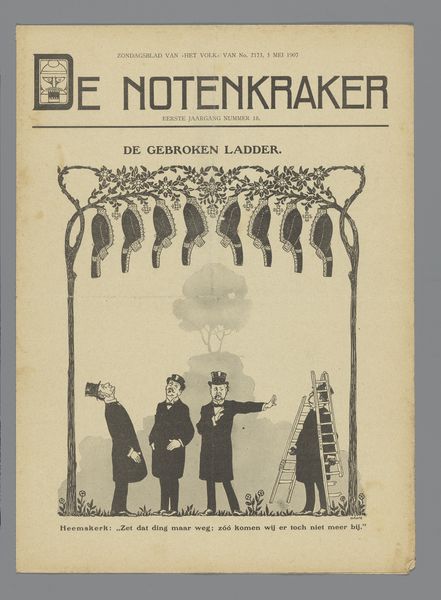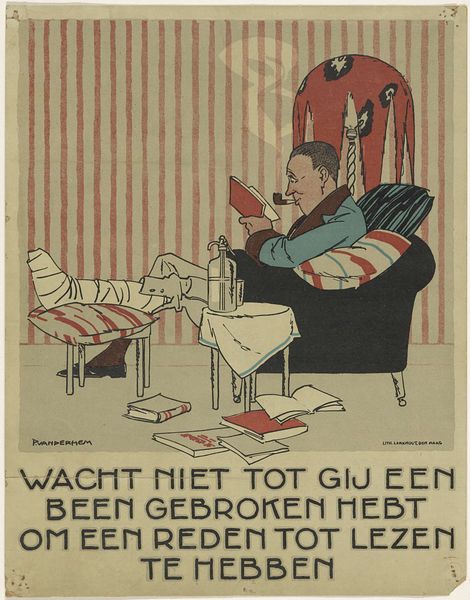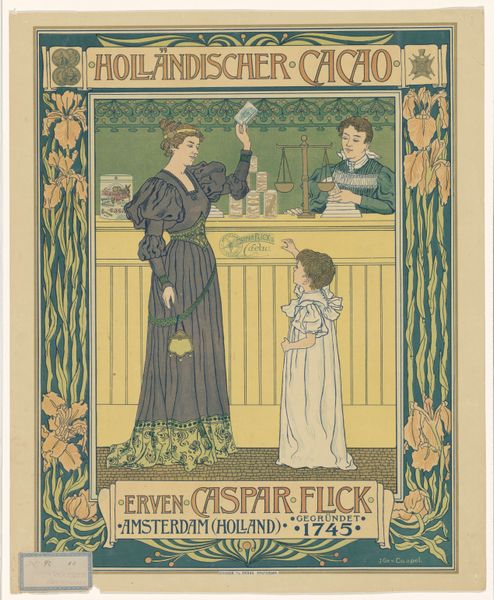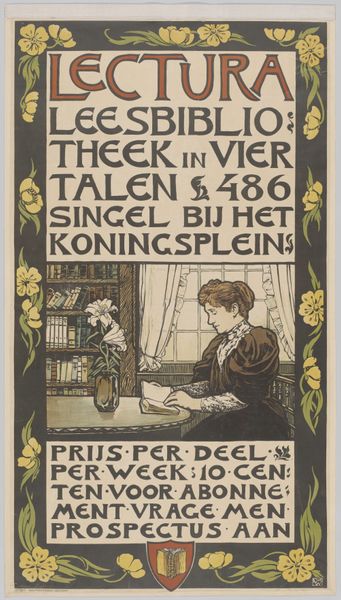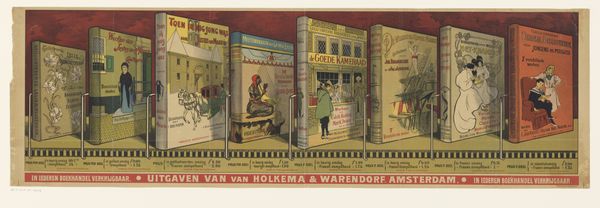
print, poster
#
art-nouveau
# print
#
landscape
#
watercolour illustration
#
cartoon style
#
poster
Dimensions: height 780 mm, width 1065 mm
Copyright: Rijks Museum: Open Domain
Curator: This is an advertising poster designed around 1896-1898 by Johann Georg van Caspel for the Hinde-Rijwielen bicycle factory in Amsterdam. Editor: Oh, it has a wonderfully serene yet odd feeling! It's like looking into a perfectly ordered dream with a tinge of, perhaps, societal critique simmering underneath? Curator: Indeed. There's an art nouveau influence in the flowing lines and composition, but for me, what strikes me most is how it turns bicycles into a scene of gentle social observation, framed through the lens of production. Editor: See, the whole scene hums with process! The meticulously drawn bicycles scream industrial production, and that repetitive row of what I’m assuming are sprouting leeks hints at intensive agriculture nearby. How were the bikes constructed and, crucially, *by whom*? Curator: We know very little about the Rijwielen factory, which does create a bit of mystery. It leaves us pondering not just the aesthetics, but the hands, the labour, involved in constructing both the bikes and this idyllic landscape. It's all so neatly packaged for consumption, isn't it? Editor: And the consumption extends to our view of leisure itself. Notice the children, idealized but also almost surveilled. The whole scene becomes about who has the leisure to watch and who the duty to provide it—with the "freedom machine" in plain sight! Curator: I hadn't considered that, but you’re spot on. Even the very medium—a print intended for mass distribution— speaks to the material circumstances that gave birth to art nouveau. It's high art serving commerce, challenging our traditional views of where creative inspiration can reside. Editor: It definitely urges us to view all forms of making – poster creation, bicycle fabrication, land cultivation, the list continues -- as connected forms of cultural production and labour. A lovely and intricate, albeit complicated, peek into history! Curator: Absolutely! This Dutch tableau pulls us beneath its tranquil surface to consider not just what we see but how, and by whom, it came to be.
Comments
No comments
Be the first to comment and join the conversation on the ultimate creative platform.
